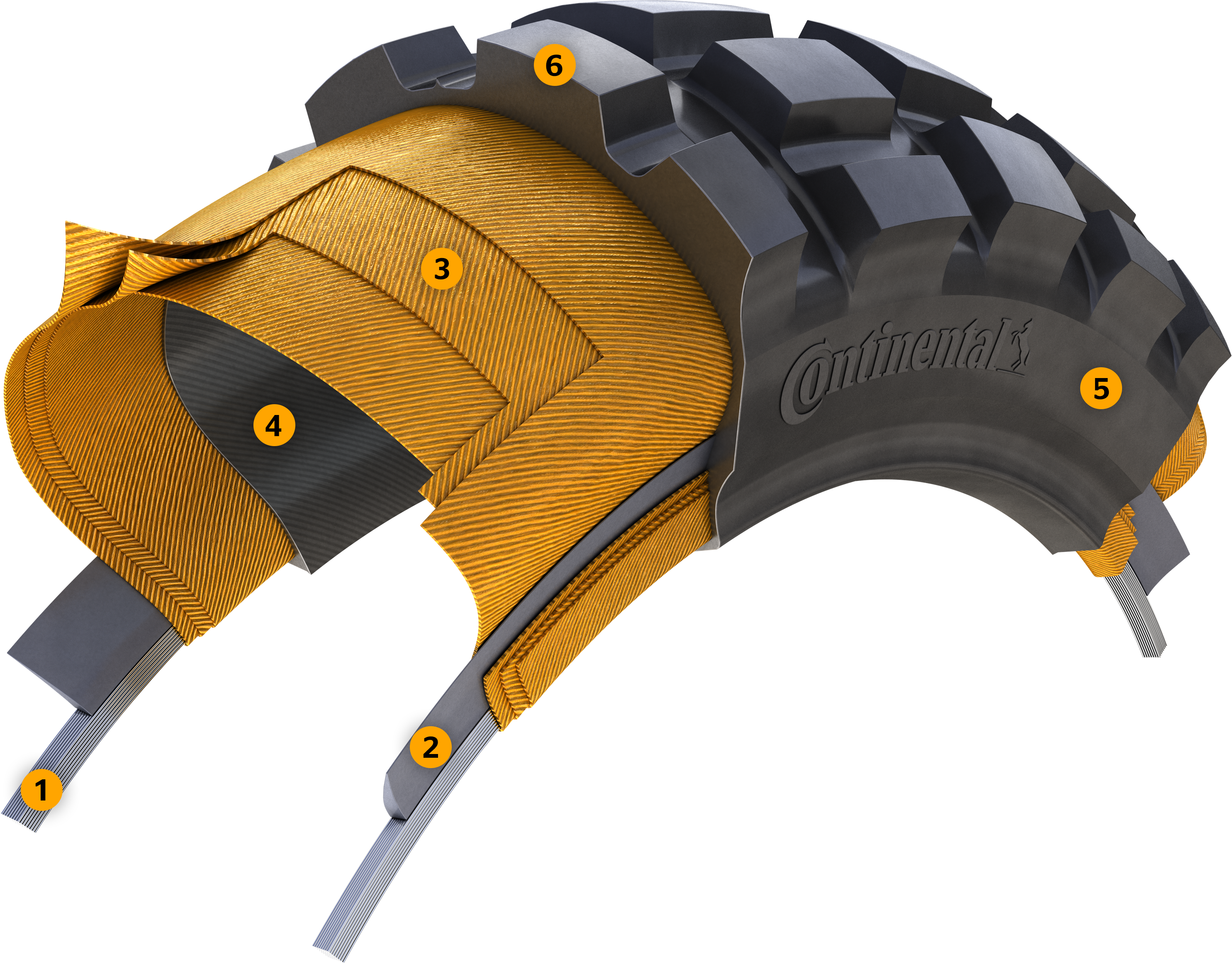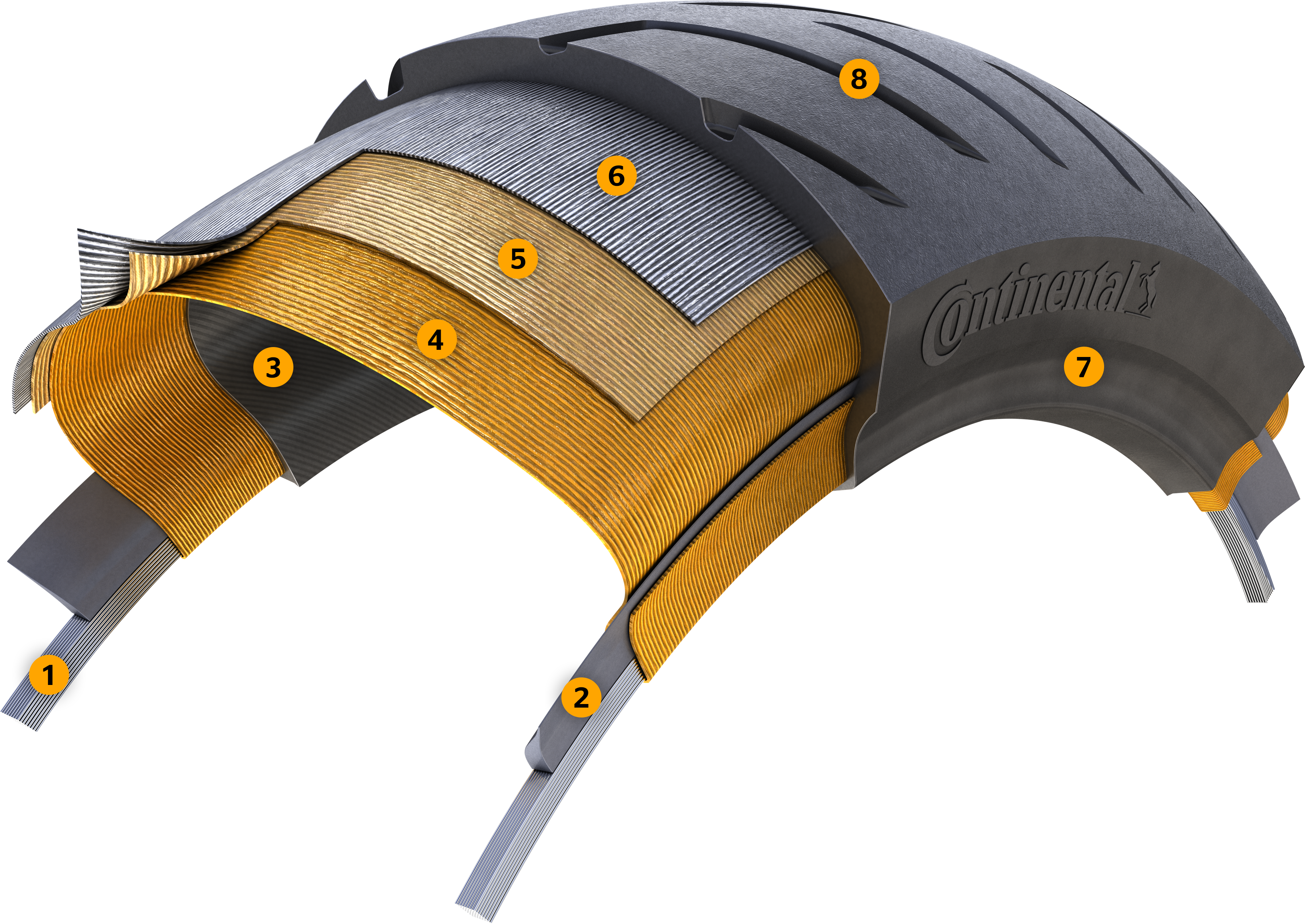Visit Continental Tires in your country for local vehicle fitment
# Tire Knowledge
Motorcycle and Scooter - Tire Construction Types
Differences and Advantages
There are four different tire constructions for motorcycle tires available:
- Crossply tires
- Breaker tires
- Bias belted tires
- Radial tires
Crossply tire
On today's market the crossply tire is the "classic" design. Its advantages are its simple structure and its sturdy sidewalls, which particularly in off-road use offer many benefits (impact protection). Crossply tires have a maximum design speed of 240 km/h (150 mph). Material used: usually rayon or nylon fabric.
Typical designation:
4.00 - 18 M/C 64H TL

- Bead core
- Apex
- Carcass (Rayon / Polyamide)
- Inner-liner
- Sidewall
- Tread
Breaker tire
The breaker tire originated from the crossply design, to provide a tread area which was effectively reinforced from the inside, giving the tire a longer service life through reduced transverse slip and making it less prone to failure. Material used: usually rayon or nylon fabric. Normally the breaker and casing feature the same material.
Typical designation:
130/90 - 16 M/C 73H TL Reinforced

- Bead core
- Apex
- Carcass (Rayon / Polyamide)
- Breaker (Rayon / Polyamide)
- Inner-liner
- Sidewall
- Tread
Bias belted tire
The bias belted tire is the precursor of the radial tire. Whilst the casing is still crossply in design, the tire features a belt, usually made from Kevlar. The bias belted tire can be recognised by the B (=bias belted) in the designation on the tire sidewall.
Typical designation:
150/70 B 17 M/C 69Q TL

- Bead core
- Apex
- Carcass (Rayon / Polyamide)
- Belt (Kevlar or Polyamide)
- Inner-liner
- Sidewall
- Tread
Radial tire
Radial tires feature a casing angle of approx. 90° to the circumferential direction (direction of travel) and a belt angle of 0°. The belt, located under the tread area, gives the tire stability and permits far higher speeds, as the centrifugal force deformation is subsantially lower. Reduced material thickness in the sidewall section means the tire heats up less and the high speed strenght is futher increased.
In terms of riding dynamics, modern motorcycles are geared to radial tires. As an example: a 4.00 - 18 M/C 64H TT tire "grows" by approximately 2 cm on average at a speed of 210 km/h (131 mph), whereas a comparable radial tire only expands by a few millimeters. The radial tire can be recognised by the R in the designation on the sidewall of the tire.
Typical designation:
190/50 ZR 17 M/C (73W) TL

- Bead core
- Apex
- Inner-liner
- Carcass (Polyamide)
- Breaker
- Steel cord belt
- Chafer / Rim-Striü
- Tread
Still have questions?
Just ask.
We are happy to answer all your questions and support you with our tire expertise.